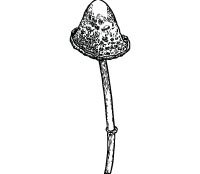An early warning on Alzheimer’s
An international team of researchers, in conjunction with a worldwide research collaboration dedicated to Alzheimer’s disease, has discovered a way to identify the onset of the condition years before the physical symptoms manifest.
Long before the symptoms of Alzheimer’s become apparent, neurons begin to degrade and the brain begins to change and the researchers found that neurofilament accumulates in the blood very early in the preclinical phase among those who will develop the condition. The amount and nature of these neurofilaments can predict the onset of Alzheimer’s with remarkable sensitivity, offering a potential new diagnostic tool that is less expensive and easier to apply than brain scans.
The team — from the German Centre for Neurodegenerative Diseases (DZNE), the Hertie Institute for Clinical Brain Research and the University Hospital Tuebingen — worked in conjunction with the Dominantly Inherited Alzheimer Network, as well as other international institutions. They found that analysing amyloid proteins in the blood reflects neuronal degradation with a high degree of accuracy.
Dr Mathias Jucker, Senior Researcher at DZNE, commented: “The fact that there is still no effective treatment for Alzheimer’s is partly because current therapies start much too late.
“Our blood test does not look at the amyloid, but at what it does in the brain, namely neurodegeneration. In other words, we look at the death of neurons.”
The research was partly based on the fact that when brain cells die, their remains can be identified in a blood test. “Normally, however, such proteins are rapidly degraded in the blood and are therefore not very suitable as markers for a neurodegenerative disease. An exception, however, is a small piece of so-called neurofilament that is surprisingly resistant to this degradation,” added Dr Jucker.
He and his colleagues followed 406 individuals and noted that these changes were detectable up to 16 years before the onset of Alzheimer’s.
While the rate of change in neurofilaments was associated with brain degradation, its relationship to deposition of toxic amyloid proteins was less noticeable, which supports the theory that while amyloid proteins trigger the condition, neuronal degradation occurs as an independent entity in the disease course.
The accumulation of neurofilaments in the blood also occurs in other neurodegenerative disorders, so the blood test is only conditionally applicable for diagnosing Alzheimer’s disease. “However, the test accurately shows the course of the disease and is therefore a powerful instrument for investigating novel Alzheimer’s therapies in clinical trials,” said Dr Jucker.
The research was published recently in the journal Nature Medicine.













Leave a Reply
You must be logged in to post a comment.